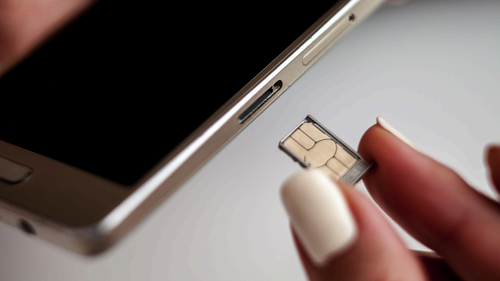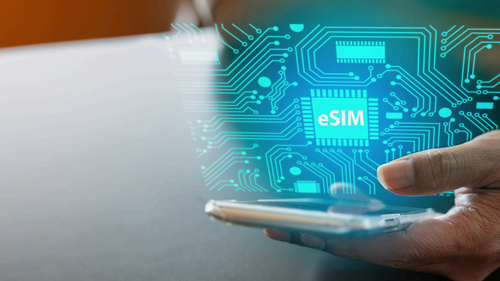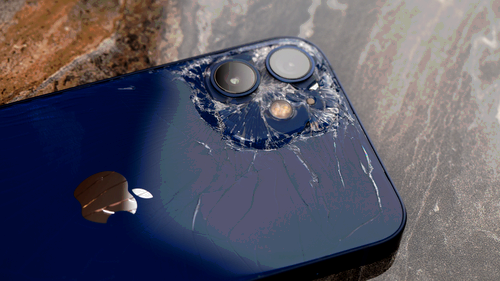Key Takeaways
- eSIM is a digital replacement for physical SIM cards in smartphones, allowing for easier setup and switching between carriers.
- However, there is still inconsistent carrier support, potential delays to setup, and possible complications when switching devices with eSIM.
We’re finally witnessing the death of physical SIM cards. New iPhones require eSIM for mobile networking, and it’s only a matter of time before other smartphones follow suit. Most carriers support eSIM, though you may encounter problems when upgrading to the new standard.
What Is eSIM?
Almost every mobile phone made in recent memory uses a SIM card for cellular service. This tiny piece of plastic is a “subscriber identity module.” It contains your phone number, but more importantly, it verifies that you are a carrier’s paying customer. Without a SIM card, you can’t make calls or connect to mobile networks.
Created in 1991, the SIM standard has managed to survive over three decades. It’s a highly effective way for carriers to manage their service, and it allows customers to transfer service between phones without much hassle. Just take the SIM card out of your old phone and stick it in the new one.
But physical SIM cards are technically outdated. And, for better or worse, we’ve reached a point where the idea of a physical SIM card confuses or intimidates many smartphone users. So, eSIM is the replacement.
Like a physical SIM card, eSIM allows you to connect to a carrier’s network. It also grants you a phone number. But there aren’t any physical constraints to eSIM. Instead of sticking a piece of plastic into your phone, you simply download an eSIM profile from your carrier. Smartphones can hold up to five eSIM profiles at once, which is great for travel, although most people will stick with a single eSIM.
There isn’t a standardized process for installing eSIM profiles. But in most cases, you’ll download an app, scan a QR code, or visit your carrier’s website to get things set up. You may need to contact your carrier to complete this process, though some carriers support “eSIM Quick Transfer,” which lets you do everything yourself.
In theory, the eSIM standard should simplify things for both customers and carriers. Signing up for a new cellular provider will take just a few minutes, as you don’t need to go into a store or wait for a SIM card to arrive in the mail. And if you use multiple providers for work or travel, you can switch between their networks without touching a physical SIM card.
But one of eSIM’s biggest hurdles, at least for early adopters, will be carrier support. Several carriers, especially those outside of the United States, simply haven’t implemented eSIM. Support for the eSIM Quick Transfer protocol is also a rarity.
What Are the Benefits of eSIM?
For most people, eSIM is a small and silent improvement to cellular service. You can buy a phone from anywhere and connect it to your carrier’s network through an app, QR code, or website. There’s no need to transplant a SIM card from your old phone or visit a carrier in person, assuming that your carrier supports eSIM Quick Transfer.
Plus, eSIM can reduce the time it takes to join a new carrier. You don’t need to visit a physical store or wait for a SIM card to arrive in the mail—just follow your carrier’s instructions to set up eSIM at home.
International travelers may also benefit from eSIM. If you’re visiting Germany, for example, you can join a local carrier’s network on your phone without tucking a delicate little SIM card in your luggage. Since smartphones can support up to five eSIM profiles at a time, even the most eclectic travelers will be accommodated.
There are also some practical benefits to eSIM. Phone manufacturers can stick larger batteries or other components in their phones by eliminating the physical SIM tray. And you don’t need to worry about a faulty SIM card if you’re using eSIM.
Unfortunately, eSIM Has Some Downsides
There are several obvious benefits to eSIM. Unfortunately, these benefits are overshadowed by a frustrating problem—eSIM doesn’t always work. Carriers are still struggling to make the switch, and their implementation of eSIM Quick Transfer is inconsistent at best. If you’re lucky, eSIM is a walk in the park. But some people aren’t lucky.
A new technology like eSIM is bound to experience growing pains. Carriers will figure things out eventually.
Still, you may find that eSIM makes it harder to transfer from one phone to another. Most people become familiar with SIM cards when they temporarily switch to an old or borrowed phone. The eSIM process complicates things a bit, as you can’t just transplant the SIM card out of your broken phone—you need to go through an online process that may require on-screen input from your busted device.
And if you own multiple phones with eSIM service, you need to go through your carrier’s eSIM setup process to switch from one phone to another. This is especially frustrating for reviewers like myself, who regularly pop their personal SIM cards into new devices. (A niche complaint, obviously.)
Carriers’ eSIM transfer services could also become overloaded when a popular new phone comes out. As a result, you may be forced to wait a few hours when setting up a brand-new device. Of course, outages may occur at any time and are not limited to smartphone launch days.
And while eSIM will eventually make international travel easier, it could make things difficult for early adopters. Very few carriers outside the United States actually support eSIM. Until the eSIM standard becomes ubiquitous, international travelers with eSIM-only phones may be forced to use expensive roaming data in certain regions.
Which Carriers Support eSIM?
Most major US carriers support the eSIM standard. But if you aren’t with the “big three,” there’s a small chance that you still need a physical SIM card to use mobile data or make calls.
Here’s the list of US carriers who currently support eSIM, according to Apple:
- AT&T (Supports Quick Transfer)
- Boost Mobile
- Boost Infinite
- Caroline West Wireless
- Cellcom (Supports Quick Transfer)
- Credo Mobile
- Cricket (Supports Quick Transfer)
- C Spire (Supports Quick Transfer)
- FirstNet
- GCI Alaska
- H2O Wireless
- Nex-Tech Wireless
- PureTalk
- Red Pocket
- Spectrum Mobile
- Straight Talk
- Strata Networks
- T-Mobile USA (Supports Quick Transfer)
- Tracfone
- UScellular (Supports Quick Transfer)
- Verizon Wireless (Supports Quick Transfer)
- Xfinity Mobile
Note that only seven of these carriers support the Quick Transfer protocol. Without Quick Transfer, you need to contact your carrier to set up eSIM on a smartphone. And, as we mentioned earlier, Quick Transfer doesn’t always work properly.





